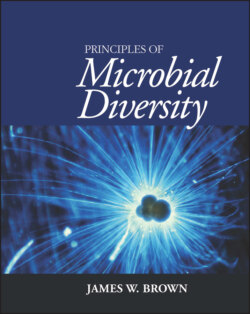Читать книгу Principles of Microbial Diversity - James W. Brown - Страница 41
3
Phylogenetic Information
ОглавлениеMolecular phylogenetic analysis is the use of macromolecular structure (usually nucleotide or amino acid sequences) to reconstruct the phylogenetic relationships between organisms. The extent of difference between homologous DNA, RNA, or protein sequences in different organisms is used as a measure of how much these organisms have diverged from one another in evolutionary history.
The typical scenario where a phylogenetic analysis is needed is the characterization of a novel organism: for example, determining the phylogenetic placement (phylotype) of a novel organism, in order to make predictions about its unknown properties. This might be a clinical isolate of a potential pathogen, an organism that carries out useful biochemistry, an organism that seems to be abundant in an interesting environment, or anything else of interest.
The process of molecular phylogenetic analysis can be divided into four critical parts, each of which, of course, also has various subparts:
1 1. Decide which organisms and sequences to use in the analysis
2 2. Obtain the required sequence experimentally or from databases
3 3. Assemble these sequences in a multiple-sequence alignment
4 4. Use this alignment to generate phylogenetic trees
In this chapter, we walk through the first three steps of this process.
